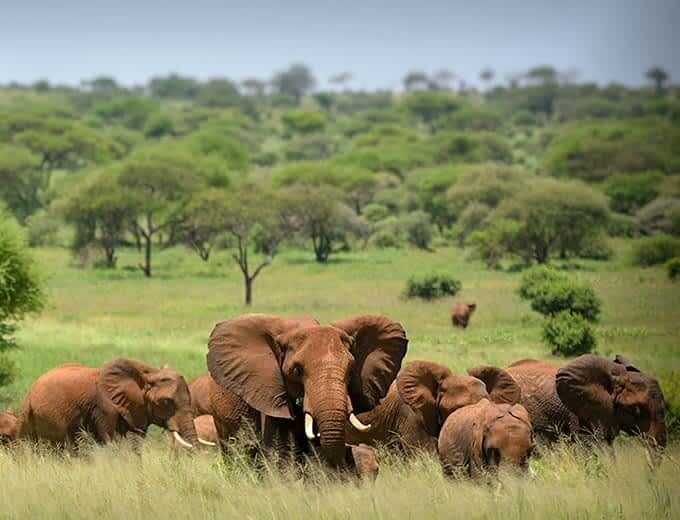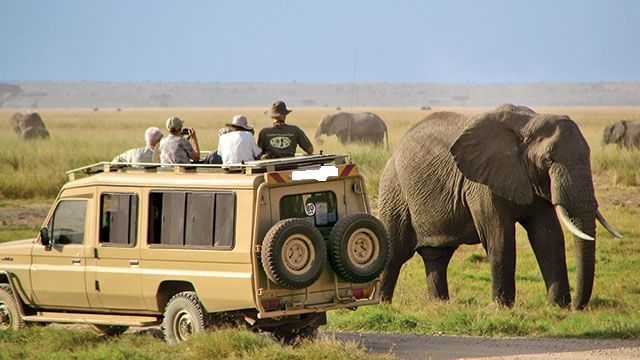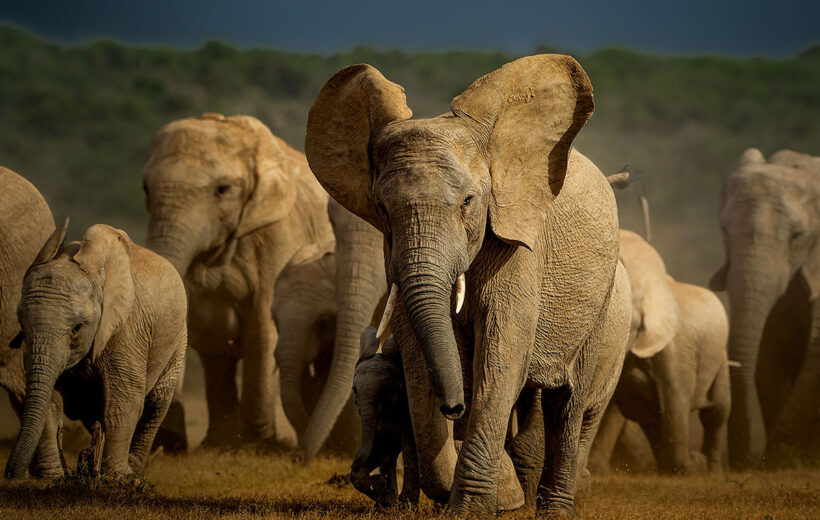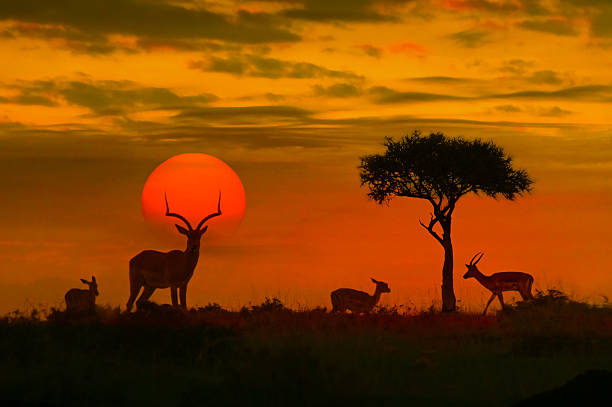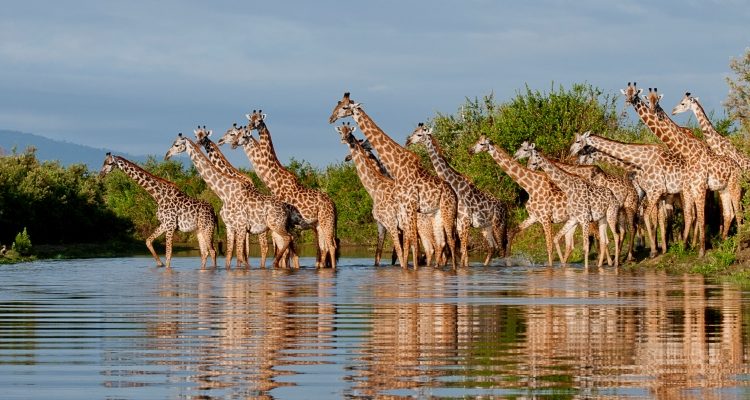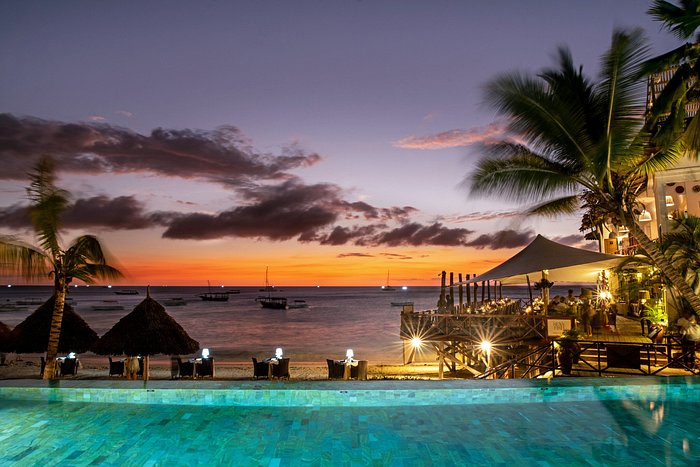Lake Manyara National Park
Lake Manyara National Park
Lake Manyara National Park is a picturesque and ecologically diverse wildlife conservation area located in northern Tanzania. It is a relatively compact park but offers a wealth of unique attractions, making it a popular destination for safari enthusiasts. Here is a detailed overview of Lake Manyara National Park:
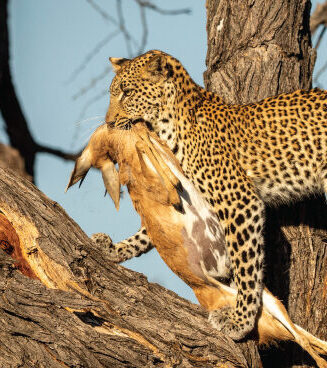
Key features of Lake Manyara National Park
1. Scenic Beauty: Lake Manyara is renowned for its stunning natural beauty. The park is nestled between the Great Rift Valley's dramatic western escarpment and the serene shores of the lake. The diverse landscapes include lush groundwater forests, open grasslands, acacia woodlands, and the tranquil lake itself, making it a paradise for nature enthusiasts and photographers.
2. Birdwatching Paradise: Lake Manyara National Park is a haven for birdwatchers, with over 400 bird species recorded within its boundaries. The park is particularly famous for its flocks of pink flamingos that wade in the shallow waters of the lake, creating breathtaking scenes. Other bird species, including pelicans, herons, eagles, and hornbills, can also be spotted here.
3. Tree-Climbing Lions: One of the park's unique attractions is its population of tree-climbing lions. While these lions are also found in other parts of Africa, they are particularly famous in Lake Manyara for their tendency to ascend trees, providing an unusual and captivating sight for visitors.
4. Abundant Wildlife: Although Lake Manyara is a small park compared to others in Tanzania, it still boasts a rich diversity of wildlife. Along with the tree-climbing lions, you can encounter herds of elephants, buffalo, giraffes, zebras, wildebeests, and various antelope species. Leopards, cheetahs, and hyenas are among the park's predators.
5. Thriving Flora: The groundwater forests of Lake Manyara are unique and enchanting. They are home to an array of plant and tree species, including mahogany, fig, and sausage trees. These forests provide a lush habitat for a variety of wildlife.
6. Canopy Walkway: The park features a treetop canopy walkway, allowing visitors to explore the forest from a unique perspective. This elevated walk provides a chance to see birds and wildlife in the canopy and enjoy panoramic views of the park.
7. Cultural Experiences: Lake Manyara National Park is also an opportunity to learn about the local culture. The area is inhabited by several ethnic groups, including the Maasai people, who have a deep connection to the land and offer cultural experiences to visitors.
8. Accessibility: Lake Manyara National Park is conveniently located between Arusha and the Ngorongoro Conservation Area, making it easily accessible for those traveling to these popular destinations.
Best Time to Visit
- Overview
- Things To Do
- Dry Season
- Birdwatching
- Flamingo Watching
- Cultural Experiences
- Avoiding Crowds
- Accommodation
- How To Get There
The best time to visit Lake Manyara National Park in Tanzania largely depends on your preferences and what you want to experience during your safari. Lake Manyara is a diverse and unique park that offers a range of attractions throughout the year. Here are the primary factors to consider when planning your visit:
-
Dry Season (June to October):
- The dry season is generally considered the best time to visit Lake Manyara National Park. This period typically spans from June to October and offers several advantages:
- Optimal Wildlife Viewing: During the dry season, wildlife congregates around the remaining water sources, making it easier to spot a variety of animals, including elephants, giraffes, buffaloes, and tree-climbing lions.
- Birdwatching: Lake Manyara is renowned for its birdlife, and the dry season is an excellent time to observe both resident and migratory bird species.
- Clear Visibility: With less vegetation, visibility is enhanced, making it ideal for photography and wildlife observation.
- Pleasant Weather: Mild temperatures and minimal rainfall ensure comfortable conditions for outdoor activities.
-
Wet Season (November to May):
- The wet season, which includes the short rains (November to December) and long rains (March to May), can be a rewarding time to visit Lake Manyara, especially for specific interests:
- Lush Landscapes: The park becomes lush and green, with vibrant vegetation during the wet season. The scenery is beautiful, and it’s a great time for landscape photography.
- Baby Animals: Many wildlife species give birth during this period, which can lead to increased opportunities to see young animals.
- Fewer Crowds: The park is less crowded, making it an excellent option for travelers who prefer a quieter and more intimate safari experience.
-
Migratory Bird Season (November to April):
- If you’re a keen birdwatcher, the wet season, specifically from November to April, is when many migratory birds arrive at Lake Manyara. You’ll have the chance to see a variety of waterbirds and other avian species.
Ultimately, the best time to visit Lake Manyara National Park depends on your interests and what you want to experience during your safari. The dry season is a popular choice for a well-rounded wildlife safari, but the wet season and migratory bird season have their unique charms for those who appreciate lush landscapes and birdwatching opportunities.
Lake Manyara, located in northern Tanzania, offers a variety of activities and attractions for visitors to explore. It’s a diverse and ecologically rich region, making it a unique destination. Here are some of the things to do in and around Lake Manyara:
-
Game Drives: Lake Manyara National Park is known for its diverse wildlife. Take a game drive to spot animals like elephants, giraffes, buffaloes, hippos, baboons, and a variety of antelope species. Keep an eye out for the famous tree-climbing lions that are unique to the park.
-
Birdwatching: Lake Manyara is a birdwatcher’s paradise with over 400 bird species. Pink-backed pelicans, flamingos, storks, and kingfishers are just a few of the avian highlights you might encounter.
-
Canoe Safaris: Guided canoe safaris on Lake Manyara provide a different perspective on the park’s wildlife and landscapes. You can get close to hippos and other aquatic creatures while enjoying the tranquility of the lake.
-
Cultural Visits: Nearby Maasai communities offer cultural experiences, where you can learn about Maasai traditions, crafts, and daily life. Participating in traditional dances and visiting local markets can be enriching.
-
Hot Springs: Visit the Maji Moto Hot Springs, located outside the park, to relax in natural hot springs surrounded by lush vegetation.
-
Walking Safaris: Some lodges and tour operators offer guided walking safaris, allowing you to explore the park’s diverse ecosystems on foot. This is a great way to get up close to the flora and fauna.
-
Picnicking: Lake Manyara National Park has designated picnic sites where you can take a break, enjoy a meal, and appreciate the beautiful surroundings.
-
Visit the Hippo Pool: This is a popular spot in the park to observe hippos up close. The pool is often bustling with these massive mammals, and it’s an interesting sight.
-
Mto Wa Mbu Village: Visit the multicultural village of Mto Wa Mbu, located near the park’s entrance. Explore local farms, markets, and art galleries, and sample various traditional foods.
-
Hiking: For those looking for a bit of adventure, consider hiking the Great Rift Valley Escarpment. The views from the top offer a panoramic perspective of the park and surrounding areas.
-
Sunset Game Drives: Experience the park in a different light by taking a sunset game drive. The colors of the setting sun and the evening wildlife activity create a magical atmosphere.
-
Relax at Your Lodge: Many lodges and camps in the Lake Manyara area offer comfortable accommodations with beautiful views. Enjoy leisurely moments in the lodge gardens or by the swimming pool.
Lake Manyara offers a combination of wildlife, birdlife, cultural interactions, and natural beauty, making it a versatile destination for all types of travelers. Whether you’re an avid safari enthusiast or seeking a relaxed and culturally enriching experience, you can find something to suit your interests at Lake Manyara.
The dry season in Lake Manyara, which typically spans from June to October, is a significant period for both the park’s ecosystem and wildlife. Here’s what you can expect during the dry season in Lake Manyara:
1. Optimal Wildlife Viewing: The dry season is often considered the best time for wildlife viewing in Lake Manyara National Park. As water sources become scarce, animals congregate around the remaining water, such as the shores of Lake Manyara itself. This concentration of wildlife makes it easier to spot a variety of species, including elephants, buffaloes, giraffes, zebras, and hippos.
2. Ideal Birdwatching: Lake Manyara is a renowned birdwatching destination, and the dry season offers excellent conditions for bird enthusiasts. As water levels decrease, waterbirds become more concentrated and easier to observe, including flamingos, pelicans, and storks.
3. Tree-Climbing Lions: One of the unique features of Lake Manyara National Park is its population of tree-climbing lions. These lions are known for resting in the branches of acacia trees. The dry season is a great time to observe these fascinating creatures in action.
4. Clear Visibility: The reduced vegetation and dry, open landscapes during the dry season provide clear visibility for wildlife observation. This is particularly advantageous for photography and capturing the park’s natural beauty.
5. Mild Weather: The dry season is characterized by pleasant weather with mild temperatures, making it comfortable for outdoor activities like game drives and birdwatching.
6. Fewer Insects: The dry season generally experiences lower insect activity, such as mosquitoes, which can make your outdoor experiences more enjoyable.
While the dry season is ideal for wildlife viewing, it’s also the park’s peak tourist season. This means that Lake Manyara National Park can become relatively busier during this time compared to other seasons. To make the most of your visit and avoid larger crowds, consider visiting the park during the early or late months of the dry season.
Overall, the dry season in Lake Manyara is an excellent time to explore this beautiful and diverse park, with numerous opportunities to witness its unique flora and fauna in a captivating setting.
-
Bird watching in Lake Manyara National Park is a delightful and rewarding experience, thanks to the park’s diverse avian population. This park, situated in northern Tanzania, is famous for its incredible birdlife, making it a must-visit destination for bird enthusiasts. Here’s what you can expect when bird watching in Lake Manyara:
-
Flamingos: Lake Manyara is home to both Greater Flamingos and Lesser Flamingos. These striking pink birds wade through the lake’s shallow waters in search of their favorite food, algae and small aquatic creatures.
-
Waterbirds: The lake and its surroundings attract a wide variety of waterbirds, including pelicans, storks, herons, egrets, and spoonbills. You can observe these elegant birds as they feed, nest, and soar over the lake.
-
Raptors: Lake Manyara National Park is a great place to spot raptors. Keep an eye out for fish eagles, African fish eagles, and various species of hawks, eagles, and owls.
-
Ground Hornbills: Southern Ground Hornbills are a unique sight in Lake Manyara. These large, striking birds can often be seen foraging on the ground.
-
Hornbills: The park is home to several hornbill species, including the Silvery-cheeked Hornbill and the Von der Decken’s Hornbill. These colorful and charismatic birds are commonly seen perched in trees or flying through the canopy.
-
Weavers: Lake Manyara hosts numerous weaver species, known for their intricate and hanging nests. You can watch weavers building their nests and displaying their vibrant plumage.
-
Kingfishers: Malachite Kingfishers and Pied Kingfishers are common sights along the lake’s shores. These tiny, colorful birds are often seen perched on branches, waiting for the perfect moment to dive for fish.
-
Songbirds: The park is home to a wide variety of songbirds, including sunbirds, starlings, cuckoos, and various colorful finches. Their melodious songs add to the park’s ambiance.
-
Migratory Birds: During the wet season, Lake Manyara welcomes migratory birds from Europe and Asia. This influx of visitors adds to the park’s avian diversity.
-
Guided Birdwatching Tours: Many lodges and tour operators in the Lake Manyara area offer guided birdwatching tours. Knowledgeable guides can help you identify and learn more about the park’s bird species and their behaviors.
Lake Manyara National Park’s rich birdlife is a testament to the park’s varied ecosystems, from the lake and its shores to the dense groundwater forest and open grasslands. Whether you’re an experienced birder or a novice, the park provides an abundance of opportunities for birdwatching and photography in a beautiful natural setting.
-
Flamingo watching in Lake Manyara National Park is a captivating experience, as the park is one of the few places in East Africa where you can observe these elegant, pink-hued birds in their natural habitat. Here’s what you need to know about flamingo watching in Lake Manyara:
-
Flamingo Species: Lake Manyara is home to both the Greater Flamingo and Lesser Flamingo species. These flamingos are renowned for their distinctive pink plumage and striking long legs and necks. Both species are often seen wading through the shallow waters of the lake.
-
Flamingo Numbers: The number of flamingos in Lake Manyara can vary depending on factors such as water levels, food availability, and seasonal conditions. Sometimes, you may witness thousands of flamingos congregating at the lake, creating a mesmerizing sight.
-
Best Viewing Times: The best time to observe flamingos in Lake Manyara National Park is typically during the wet season, which occurs from November to April. This is when water levels in the lake are higher, and the alkaline waters teem with the tiny algae and crustaceans that flamingos feed on.
-
Birding Hotspots: The most popular spot for flamingo watching is the shallow alkaline lake itself. The birds often congregate near the lake’s shores and feed in the shallower areas. Game drives or guided tours that include birdwatching are the best ways to get close to the flamingos.
-
Photography: Lake Manyara’s flamingos offer excellent opportunities for bird photography. The striking contrast between their pink feathers and the shimmering blue waters makes for beautiful and dramatic images.
-
Binoculars and Field Guides: It’s a good idea to bring binoculars for a closer look at the flamingos and other bird species in the area. A field guide or bird identification book can help you learn more about the different avian residents.
-
Guided Tours: Consider taking a guided tour with a knowledgeable naturalist or birdwatching expert. They can provide insights into the behavior and biology of flamingos and other bird species found in Lake Manyara National Park.
-
Respect Wildlife: Remember to maintain a safe and respectful distance from the flamingos and other wildlife. Keep noise levels low and follow the guidance of your guide to avoid disturbing the birds.
Lake Manyara National Park is a unique and scenic destination where you can enjoy both wildlife and birdwatching experiences. Flamingo watching is just one of the highlights in this diverse park, and the striking pink hues of these graceful birds against the backdrop of Lake Manyara’s beautiful landscape make it a memorable sight for nature enthusiasts.
Lake Manyara National Park in Tanzania offers unique cultural experiences that allow visitors to interact with local communities and learn about their traditional way of life. While the park is renowned for its wildlife and scenic beauty, the surrounding areas provide opportunities to engage with indigenous cultures. Here are some of the cultural experiences you can enjoy in and around Lake Manyara:
-
Maasai Cultural Visits: The Maasai people are one of the most famous and culturally rich indigenous groups in East Africa. You can arrange visits to Maasai villages to gain insights into their traditional customs, lifestyles, and daily activities. Maasai guides often share their knowledge about the region’s flora and fauna and offer demonstrations of traditional dances and songs.
-
Cultural Markets: The bustling markets of Mto Wa Mbu, a diverse multicultural village near Lake Manyara, offer a chance to explore and purchase locally made crafts, including jewelry, clothing, and artwork. You can engage with local artisans and learn about their creative processes.
-
Educational Visits: Some Maasai villages have established cultural centers and schools, and they welcome visitors interested in learning about their community development projects and educational initiatives.
-
Art and Craft Workshops: Engage in art and craft workshops where you can try your hand at traditional Maasai beadwork or woodcarving. Local artisans are happy to share their skills and knowledge.
-
Cultural Performances: Enjoy traditional Maasai dances and performances, where you can witness vibrant and rhythmic displays of their cultural heritage. These performances are often accompanied by songs and elaborate clothing.
-
Maasai Homestays: For a more immersive experience, some Maasai villages offer homestay accommodations. Staying with a Maasai family provides a deeper understanding of their way of life and allows you to participate in their daily activities.
-
Farm Tours: Take guided tours of local farms to learn about agricultural practices and the cultivation of crops such as bananas, maize, and rice.
-
Mango Tree School: Visit the Mango Tree School, an initiative that supports local children’s education. You can interact with students, teachers, and local communities to understand the educational challenges and opportunities in the region.
-
Participate in Community Projects: Some lodges and tour operators organize community-oriented projects such as tree planting or health initiatives. These activities provide an opportunity to contribute to the local community’s well-being.
When engaging in cultural experiences, it’s essential to approach them with respect and sensitivity. Always seek permission before taking photographs, respect the privacy of community members, and consider purchasing locally made crafts or products to support the local economy. These cultural interactions offer a unique perspective on the human side of the Lake Manyara region, emphasizing the harmonious coexistence of people and nature.
Lake Manyara National Park is a popular destination in Tanzania, and it can get crowded during peak tourist seasons. To enjoy a more tranquil and intimate safari experience while avoiding crowds, consider the following strategies:
-
Visit During the Low Season:
- Plan your visit during the park’s low season, which typically coincides with the wet season from November to April. While some roads may be challenging due to rainfall, this is when the park is least crowded, and you can enjoy more privacy while exploring the area.
-
Weekdays vs. Weekends:
- Visit the park on weekdays rather than weekends. Weekends tend to attract more local and domestic tourists, which can lead to larger crowds.
-
Early Morning and Late Afternoon Safaris:
- Schedule your game drives and other activities during the early morning or late afternoon. Wildlife is often more active during these times, and there are fewer vehicles in the park.
-
Private Tours:
- Consider booking a private safari tour. While it may be more expensive, private tours provide a personalized experience, allowing you to tailor your itinerary and avoid larger groups.
-
Stay Inside the Park:
- Choose accommodations located within Lake Manyara National Park. These lodges and camps offer a quieter and more immersive experience, as you have direct access to the park’s wildlife and landscapes.
-
Exploring Lesser-Visited Areas:
- Explore the park’s less-visited or remote areas. Your tour operator or guide can recommend these locations, which are often less crowded and teeming with wildlife.
-
Guided Walking Safaris:
- Participate in guided walking safaris. This activity usually limits the number of participants, providing a more intimate and less crowded experience.
-
Mid-Range Accommodations:
- Opt for mid-range accommodations instead of luxury lodges. While still comfortable, these options may attract fewer tourists compared to high-end lodges.
-
Book in Advance:
- Make your reservations well in advance, especially if you plan to visit during the high season. This ensures that you secure your preferred accommodations and safari activities.
-
Local Cultural Visits:
- Explore the nearby villages and cultural experiences during the midday when many tourists are in the park. This allows you to engage with local communities while avoiding peak safari hours.
-
Observe Park Regulations:
- Respect park regulations and guidelines. Abiding by the rules ensures a harmonious experience for everyone in the park.
By employing these strategies, you can enjoy the natural beauty and wildlife of Lake Manyara National Park with fewer crowds and a more personalized experience. While the park’s popularity is well-deserved, careful planning and timing can help you make the most of your visit.
Lake Manyara National Park offers a range of accommodations to suit different preferences and budgets. Whether you’re looking for luxury lodges, mid-range options, or campsites, you’ll find places to stay that provide comfort and immersion in the park’s natural beauty. Here are some accommodation options in and around Lake Manyara:
Luxury Lodges:
-
Lake Manyara Tree Lodge: Operated by &Beyond, this lodge offers luxurious treehouse-style accommodations. The lodge is renowned for its elegant design, elevated views, and proximity to wildlife. It provides a high level of service and comfort.
-
Manyara Wildlife Safari Camp: Located in the heart of the park, this camp offers high-end tented accommodations with stunning views of Lake Manyara. It’s a fantastic choice for those seeking luxury and exclusivity.
Mid-Range Lodges:
-
Kirurumu Manyara Lodge: This lodge offers comfortable accommodations and beautiful views of the Great Rift Valley and Lake Manyara. It’s a mid-range option with friendly service and a relaxed atmosphere.
-
E Unoto Retreat: Situated on the outskirts of the park, E Unoto Retreat offers a blend of Maasai culture and modern comfort. The lodge features well-appointed rooms, an infinity pool, and scenic surroundings.
Budget Accommodations:
- Twiga Campsite: If you’re looking for a budget-friendly option, Twiga Campsite within Lake Manyara National Park is a popular choice. It offers basic facilities for camping and is ideal for travelers who want to experience nature up close.
Camping within the Park:
- Lake Manyara National Park Campsites: The park provides designated campsites for visitors interested in camping. These sites offer basic facilities and a more immersive experience in the park’s natural environment. Campers must bring their own equipment.
Outside the Park:
-
Mto Wa Mbu: Mto Wa Mbu, a village near the park, offers various budget and mid-range accommodations. Staying in this area allows you to explore local culture and markets.
-
Karatu: This nearby town has several lodges and guesthouses. While not within the park, Karatu is a convenient base for exploring Lake Manyara and other nearby attractions.
When planning your stay in Lake Manyara, consider factors such as the time of year you’re visiting, your budget, and the type of experience you desire. Accommodations within the park offer the advantage of immediate access to wildlife and serene surroundings, but options outside the park can provide a more budget-friendly stay with easy access to local communities. Whichever accommodation you choose, you’ll have the opportunity to explore the unique and diverse landscapes and wildlife of Lake Manyara National Park.
Lake Manyara National Park is located in northern Tanzania, making it accessible by road and air. Here’s how to get to Lake Manyara National Park:
By Air:
-
Kilimanjaro International Airport (JRO): The nearest major international airport is Kilimanjaro International Airport, located in the town of Arusha. From the airport, you can arrange a road transfer to Lake Manyara, which is approximately a 3-4 hour drive.
-
Arusha Airport (ARK): Another option is to fly into Arusha Airport. From there, you can arrange a road transfer to the park, which is around a 2-3 hour drive.
By Road:
-
From Arusha: If you’re in Arusha, you can drive to Lake Manyara National Park. The park is about 126 kilometers (78 miles) away, and the journey typically takes around 2-3 hours, depending on road conditions.
-
From Karatu: Karatu is another nearby town, and driving to Lake Manyara from Karatu is a convenient option. The distance is approximately 33 kilometers (20 miles), and the drive takes about 30-45 minutes.
-
From Ngorongoro Conservation Area: If you’re visiting the Ngorongoro Conservation Area, you can reach Lake Manyara by road. The drive is approximately 55 kilometers (34 miles) and takes about 1-1.5 hours.
Guided Tours and Transfers:
Many visitors opt for guided tours or private transfers when traveling to Lake Manyara National Park. These tours often include transportation, guided game drives, and accommodations, providing a hassle-free way to explore the park. Tour operators and lodges can arrange these packages.
Self-Driving:
For those with experience in self-driving in Tanzania, you can rent a vehicle and drive to Lake Manyara National Park. Be sure to check road conditions, obtain necessary permits, and have a reliable map or GPS.
Please note that road conditions in Tanzania can vary, and some roads may be unpaved or challenging during the wet season. It’s advisable to use a reliable driver or tour operator, especially if you are not familiar with the local road network.
Lake Manyara National Park is well-connected to other popular destinations in northern Tanzania, including Arusha, Ngorongoro Conservation Area, and the Serengeti. Whether you choose to travel by air or road, the journey to Lake Manyara is a part of the adventure, with opportunities to take in the beautiful landscapes and wildlife of the region.


